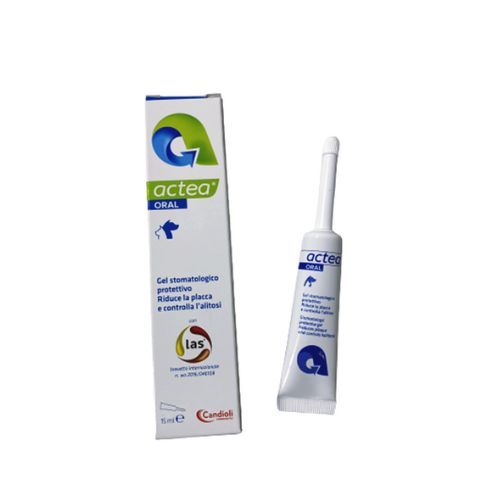|
Quantity
|
Out of stock
|
||
|
|
|||
ACTEA ORAL 🐕 Manufacturer: Candioli, Italy
Gel for the treatment of periodontal diseases (gingivitis, stomatitis, periodontitis) and prevention of plaque formation.
Soothes inflammation and quickly eliminates pain in animals.
Effectively combats stinky breath (bad breath disappears within 10 days).
In addition:
- prevents Forl (feline resorptive pruritus);
- reduces herpes and calicivirus (relieves inflammation and improves appetite);
- alleviates oral tumours;
Actea - benefits:
allergen-free (no nickel or other allergy-causing substances);
free of sulphates
Paraben free
without alcohol
no colouring agents;
APPLICATION:
Apply an appropriate amount of product to the gums by massaging gently twice daily for 10-20 consecutive days. To ensure that physiological oral conditions are maintained, apply once daily as directed by your veterinarian. To open the tube, pull the lid upwards, rotating it slightly from the base.
Gel composition:
The LAS® complex: (lactoferrin; glycerophosphoinositol (GPL) lysine; elderberry extract) lecithin, sodium hydroxide, glycine hydrochloride, phenoxyethanol, maltodextrin, water, sorbitol, glycerol, carbomer, ethylhexylglycerol.
The Las®:
Dermasyr™ is obtained using patented HTN™ industrial technology;
made from elderberry stem cells;
has anti-inflammatory, antibacterial properties;
controls sebum secretion;
good dermatological tolerance;
does not cause mutations;
does not irritate epithelial cells;
GPI is an innovative active ingredient derived from sunflower lecithin that acts as an upper step in the inflammatory cascade through an innovative mechanism of action as it matches the fully physiological autoregulatory system;
GPI is able to inhibit, through negative feedback, the activity of the enzyme cPAL2, which is deeply involved in inflammation as the main cause of arachidonic acid release;
This natural mechanism of inflammation control is similar to a natural corticosteroid without any side effects or systemic secondary effects, as it selectively acts on cPLA2 activity without interacting with hormonal balance;
the antimicrobial properties of lactoferrin are due to its ability to bind to specific electro-negative components of bacterial cell membranes, reducing their permeability and barrier function, leading to bacterial death;
antifungal activity;
lactoferrin, due to its lower molecular weight, is less allergenic than the original protein lactoferrin;
no toxic or carcinogenic effects in 40-week-old rats;
15 ml tube
































